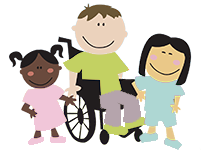Does Your Child Have a Habit of Teeth Grinding or Teeth Clenching?
 In the glossary of terms of the American Academy of Orofacial Pain, bruxism is defined as a “total Para functional daily or nightly activity that includes grinding, gnashing or clenching of the teeth” .
In the glossary of terms of the American Academy of Orofacial Pain, bruxism is defined as a “total Para functional daily or nightly activity that includes grinding, gnashing or clenching of the teeth” .
If your child grinds their teeth, don’t be too concerned. Bruxism is not necessarily a sign of stress in your child. Pediatric dentists have various theories about what causes bruxism, ranging from some irritating feature in the mouth, such as misaligned teeth, to allergies, to stress. Because a child’s teeth and jaw grow and change so quickly bruxism is common and is not usually a damaging habit in need of treatment. However seek professional advice and possible treatment if your child has persistent bruxism, substantial distress or social isolation or physical injury. Studies based on fMRI (functional magnetic resonance imaging) have found that light daytime tooth clenching is now known to be associated with extensive cortical networks and these studies provide further evidence for a complex central mechanism involved in bruxing behaviors.
Evidence-based management of bruxism is hampered by the limited number of randomized controlled studies available for assessing the efficacy of various treatment strategies, the historical lack of understanding with respect to the etiology of the condition and the changing diagnostic criteria by which bruxism is defined. Regardless, the literature contains references to a number of management strategies that may be useful in protecting the dentition, periodontium, and the jaw musculature and temporomandibular joint from this potentially destructive behavior.
The cause of bruxism in not completely agreed upon but some of the factors that may elicit or increase the strength of bruxism include:
- Stress
- Environmental factors
- Genetic predisposition
- How long and how tightly you clench and grind
- Misalignment of teeth
- Your ability to relax the facial muscle in particular but overall body relaxation
- Your diet
- Your sleeping habits: micro arousals occurring during sleep.
Symptoms may include:
- Anxiety, stress, tension
- Pain in the TMJ or jaw musculature
- Depression
- Earache (due in part because the structures of the tempromandubular joint are very close to the ear canal, and because you can feel pain in a different location that its source; this is called referred pain)
- Eating disorders
- Medications taken
- Temporal headache
- Hot, cold, or sweet sensitivity in the teeth or mobility in the teeth.
- Insomnia or poor sleep quality
- Sore or painful jaw
An examination by a medical professional should be done to rule out other disorders that may cause similar jaw pain or ear pain. The diagnosis of bruxism is descriptive in nature and include many but not all of the above symptoms.
The goal of treatments is to reduce pain, prevent permanent damage to the teeth and reduce clenching as much as possible. A pediatric occupational therapist may have clients who exhibit bruxism, perhaps associated with a sensory integration disorder or a misaligned bite. An OT familiar with teeth grinding would likely recommend many self-care steps. Parents could try this at home as well. For example:
- Apply ice or wet heat to sore jaw muscles, either can have beneficial effects
- Avoid eating hard foods like nuts, candies or steak
- Drink plenty of water every day
- Get plenty of sleep. Relaxation, behavioral strategies and sleep hygiene habits.
- Learn stretching exercises to help restore a normal balance to the action of the muscles and joints on each side of the head.
- Massage the muscles of the neck, shoulders, and face. Look for small painful nodules called trigger points that can cause pain throughout the head and face
- Learn relaxation techniques for the jaw. The goal is to make facial relaxation a habit
- Try to use opening movements in the jaw when performing activities that are linked to jaw clenching.
- referral to a dentist or orthodontist to investigate the use of mouth guards or appliances.
- Orthodontic adjustment of the bite pattern
- Biofeedback
Grinding and clenching does not fall clearly into one medical discipline. For a massage based approach seek a massage therapist trained in trigger point therapy, an occupational or speech therapist for neuromuscular therapy or clinical massage.
All treatments have a potential for unwanted side affects so be sure to discuss what these are with your medical specialist.
Tips to help your child prevent teeth grinding:
- Avoid or cut back on foods and drinks that contain caffeine, such as chocolates and colas.
- Avoid or find the lowest effective dose for medications containing amphetamines used in treating ADHD and sleep disorders.
- Do not chew on pencils or pens or anything that is not food. Avoid chewing gum as it allows your jaw muscle to get more used to clenching and makes you more likely to grind your teeth.
- Train to not clench or grind you teeth. One method is to position your tongue tip between your teeth. This practice trains your jaw muscle to relax.
- Relax your jaw muscle by using a warm washcloth against your cheek in front of your earlobe before sleep.
Internet resources:
http://www.ncbi.nlm.nih.gov/pmc/articles/PMC3081266/
http://www.medicinenet.com/teeth_grinding_bruxism/article.htm
http://umm.edu/health/medical/ency/articles/bruxism
http://www.webmd.com/oral-health/guide/teeth-grinding-bruxism?page=2
http://kidshealth.org/parent/general/teeth/bruxism.html

Comments (0)